5 Prairie Wildflowers That Can Heal Your Soil
In the middle of summer I walk the garden in search of serendipity: a small spider web delicately laced between fragile flowers, a never-before-seen bee hard at work gathering pollen and ants harvesting honeydew from aphids. More and more I get down on my knees and look up at the plants, which also forces me to look closer at the soil. There’s so much going on down there — insect nests in fallen hollow stems and small creatures turning leaves into fine compost. Then I remember that two to three times of a prairie plant’s mass is belowground.
I imagine taking the root superhighway down the stem, through the rhizome, out into the fingering of clay. Up to one-third of prairie plant roots die each year, helping to create a richer soil; some penetrate up to 12 feet down. And many plants, like legumes, actively add nitrogen to the soil — a free fertilizer. As all gardeners know, a healthy garden begins with healthy soil. Here are some uncommon, hardy and wildlife-helping native legumes from flyover country that you might want to try.
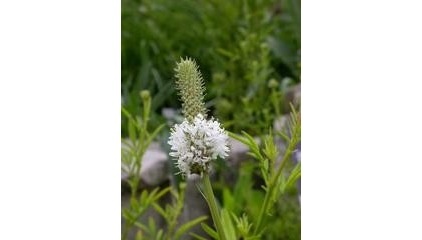
White Prairie Clover
(Dalea candida)
Native from the Rocky Mountain region up and down the U.S. to just east of the Mississippi River
This is one of the best legumes you can have, as it pumps a whopping 160 pounds of nitrogen per acre into the soil — provided, of course, you have an acre covered in white prairie clover.
It loves sun to some shade and dry, nasty soil, from clay to sand to even a bit of gravel. Reaching 2 feet tall and wide, and blooming from June to July, it is a modest plant that the bees love.
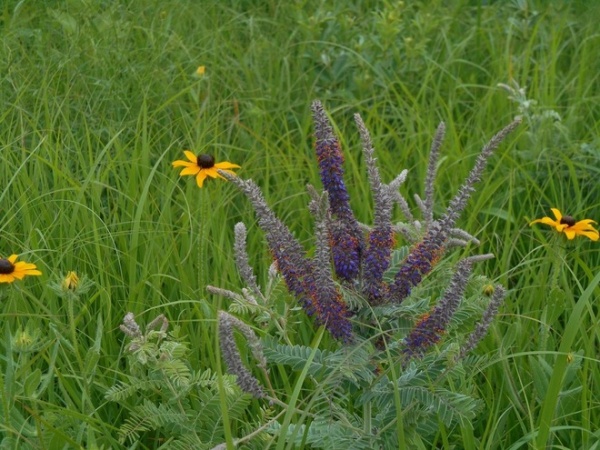
Lead Plant
(Amorpha canescens)
Native from Oklahoma up to North Dakota and east into Wisconsin and Illinois
This is one of the coolest Midwest plants. More shrub than perennial, it has woody stems that reach to 3 by 3 feet in superdry soil in full sun to a bit of shade. The hairy leaves give this plant a gray tinge, and its flower heads are truly unique — especially as you get closer. Pioneers plowing the prairie called it Devil’s Shoestrings, because its masses of roots were nearly impossible to get through. It’s highly drought tolerant and blooms in June to July.
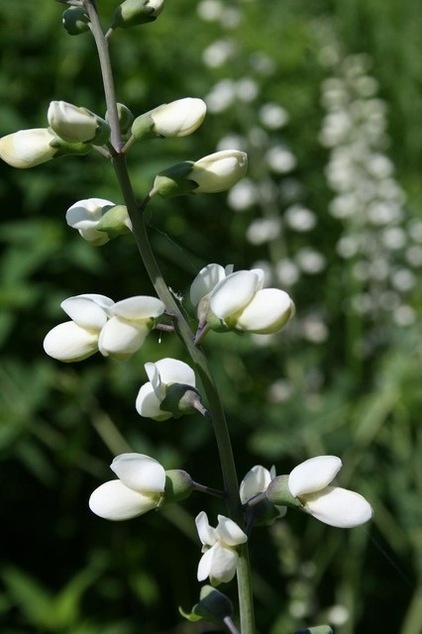
White Wild Indigo
(Baptisia alba)
Native from eastern Nebraska and Oklahoma to Indiana and parts of the Southeast
Like other Baptisia, it forms a very deep taproot, so it doesn’t like to get moved. This Baptisia is very adaptable, doing well in moist to dry soils in full sun. It reaches about 4 feet tall and 3 feet wide, blooms in June and is a host plant for several butterfly and moth species. Bumblebees are a favorite insect pollinator that you’ll see often.
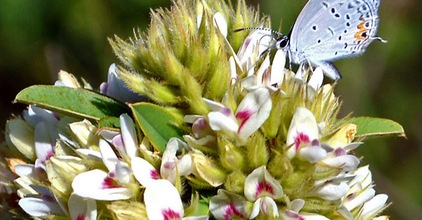
Round-Headed Bush Clover
(Lespedeza capitata)
Native from the Central Plains all the way to the East Coast
I’d bet my garden you’ve never heard of this plant, but boy, is it carefree and unique — especially if you can zoom in on the blooms. Its winter interest is also fantastic; it has very ornamental seed heads.
Bush clover prefers full sun to some shade in medium to dry soils, and reaches 2 to 4 feet tall, with a spread of 1 foot to 2 feet. It blooms from August into September — a time of year when not much else is flowering.
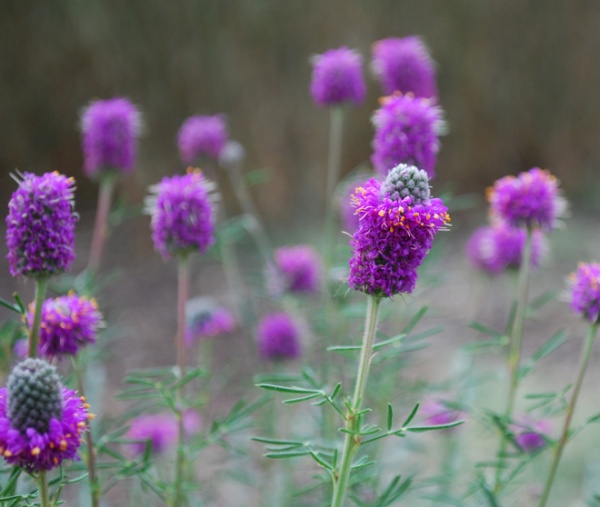
Purple Prairie Clover
(Dalea purpurea)
Native to prairies from Saskatchewan down through Texas
A cousin to white prairie clover, purple prairie clover brings in a diversity of bees like you wouldn’t believe. Emily Dickinson once wrote, “To make a prairie it takes a clover and one bee.” Pretty true, I’d say.
This plant is tough as nails and prefers sun and dry, hot soil. It grows to about 2 feet by 2 feet. Blooming from June into July, it has fall seed heads that are ornamental, and in bare soil it will self-sow moderately. Drifts of it on a prairie are just breathtaking. Shoot, drifts of every plant I’ve suggested here are stupendous.
So what do you say? Which of these legumes will you try? The correct answer is: all of them!
More:
The Simple Secret to Gardening Success
Houzz guides to gardening with native plants












